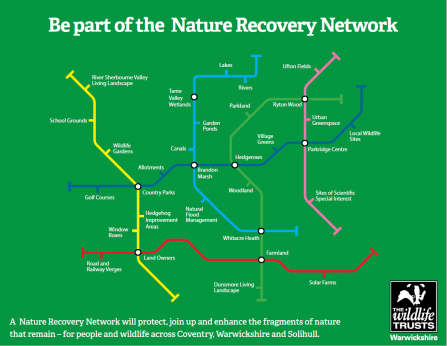The recent State of Nature Report revealed that one in seven species in the UK are at risk of extinction and 58% of species are in decline. Warwickshire Wildlife Trust, as part of The Wildlife Trusts, has long-called for ambitious new laws to allow nature to recover and we are delighted to see that the new Environment Bill will include legally-binding targets for biodiversity.
Warwickshire is now among the least wooded counties in the UK, which as a country is one of the least wooded in Europe. Action is needed to protect Warwickshire's precious woodlands and other crucial landscapes across the country.
Dr Sue Young, Head of Land Use Planning and Ecological Networks for The Wildlife Trusts, says:
“We’re really pleased to see a commitment to creating local nature recovery strategies for the whole of England to support a Nature Recovery Network. It’s very positive to hear that these will identify opportunity areas which show where action needs to be taken so that nature can recover.
“However, we are disappointed that major national infrastructure projects will not be subject to net gain – this means that the new legal requirement to make developers actively improve nature will not apply to the most damaging schemes. While we welcome the clauses strengthening the Natural Environment and Rural Communities Act – saying all public bodies must have regard to conservation and enhancement of biodiversity – we believe that this should also apply to national government when they decide on the planning of national infrastructure projects such as HS2.
“Additionally, there have been few guarantees on the independence, resourcing or the strong enforcement powers of the new watchdog, the Office for Environmental Protection. This must change if the Government’s proposals are to effectively ensure the protection of the natural environment and meet the ambition needed to turn nature’s recovery from an aspiration to a reality.”
Watch this short film for The Wildlife Trusts, where Sir David Attenborough, President Emeritus of The Wildlife Trusts, calls for powerful new environmental laws and explains the important role of Nature Recovery Networks.

